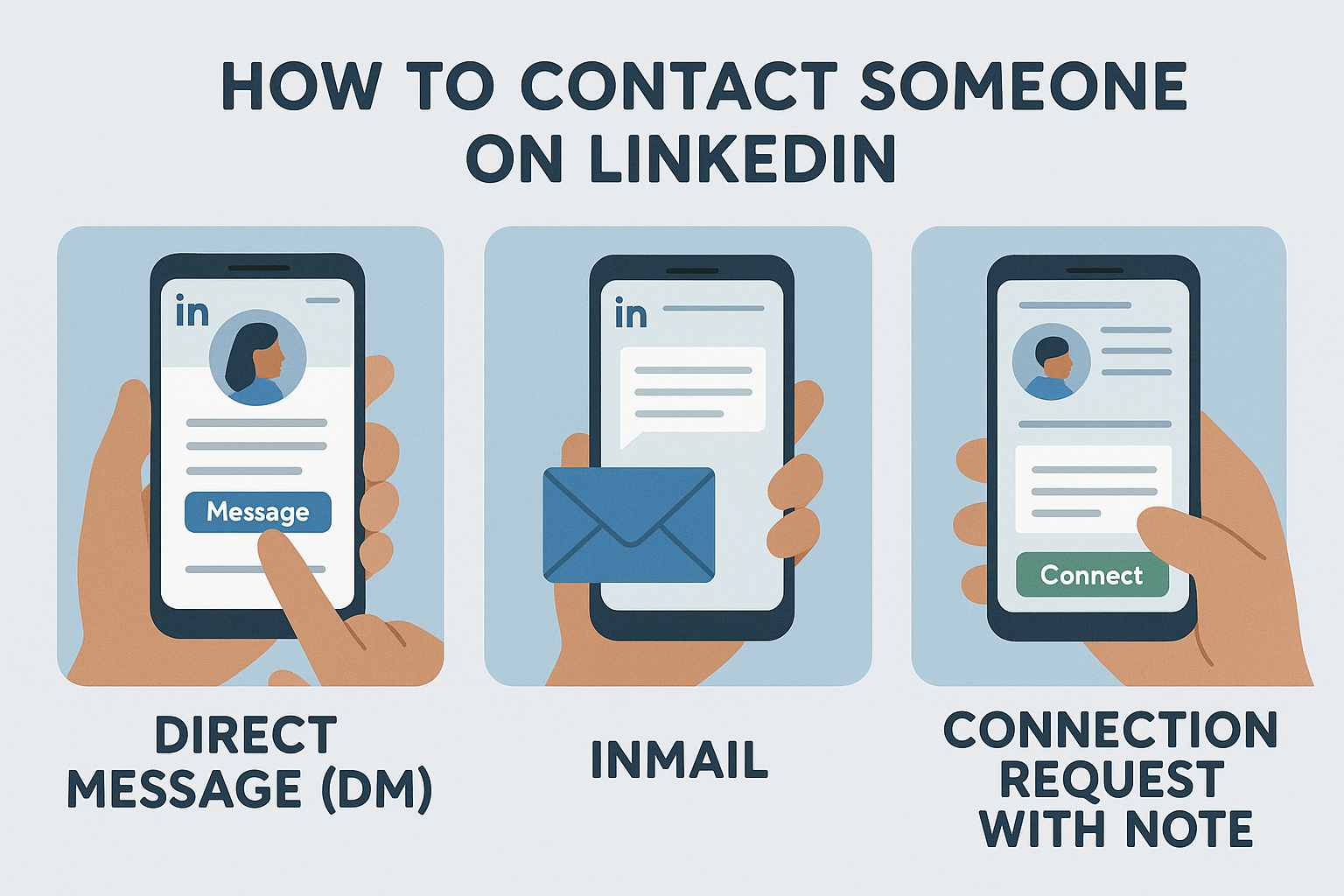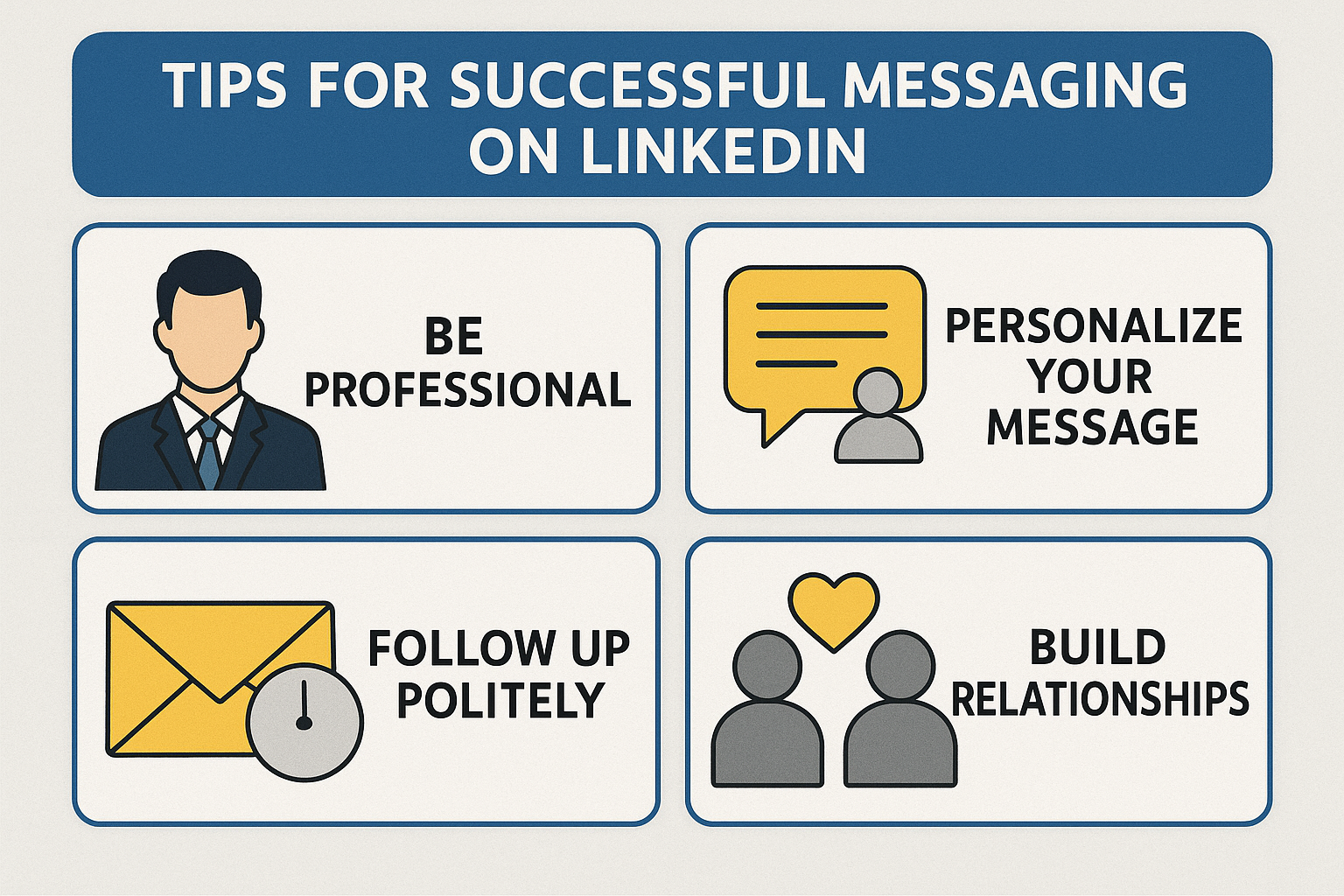LinkedIn has become a vital platform for professionals looking to grow their careers. Whether you are actively job hunting or exploring opportunities, knowing how to message someone on LinkedIn about a job can make a huge difference in getting noticed by recruiters and hiring managers. Crafting the perfect message requires professionalism, tact, and a clear understanding of your goals.
In this blog, we will walk you through the exact steps to send a message that stands out, increases your chances of getting a response, and helps you build meaningful professional connections.
Why Messaging on LinkedIn Matters?
Directly reaching out to professionals on LinkedIn allows you to bypass the competition on job boards. Many jobs are never publicly posted, and messaging a recruiter or hiring manager can give you access to hidden opportunities. Before you start messaging someone on LinkedIn about a job, make sure your LinkedIn profile is updated with a professional photo, a strong headline, and a detailed work history.
Try LinkedIn Automation For Free
How to Reach Out to a Connection About a Job?
Understanding how to reach out to a connection about a job is the first step to building a strong professional network. Start by identifying whether the person is a first-degree connection, someone you’ve met before, or a professional you admire in your industry.
Keep your initial message polite and focused. Here’s an example of a short opener:
"Hi [Name], I noticed your company is hiring for [Position]. I would love to learn more about this opportunity and see if my skills align with the role."
This kind of approach shows respect for their time while sparking a conversation.
How to Contact Someone on LinkedIn?
If you’re wondering how to contact someone on LinkedIn, the good news is that LinkedIn provides several options, and tools like LinkedIn Automation can make outreach even more efficient:
-
Direct Message (DM): For first-degree connections.
-
InMail: A premium feature allowing you to message people outside your network. Many job seekers wonder, Is LinkedIn Premium worth it? And InMail is one of its most valuable benefits.
-
Connection Request with Note: When connecting, you can add a personalized note to introduce yourself. Understanding what does 3rd mean on LinkedIn can also help you decide who to connect with effectively.
Always keep your message professional and concise. Avoid sending long paragraphs right away. This ensures that your message is more likely to be read and responded to.
How to Contact People on LinkedIn Without Being Spammy?
Knowing how to contact people on LinkedIn is more than just clicking "Connect." To stand out, personalize each message. Mention how you found their profile or why you want to connect.

For instance:
"Hi [Name], I came across your profile while researching [Company Name]. I admire the work your team is doing and would love to connect."
By doing this, you establish trust and show genuine interest rather than appearing as just another job seeker.
How to Connect with Someone on LinkedIn for a Job?
When you want to connect with someone on LinkedIn for a job, your message should clearly state your intention while remaining respectful. Start by introducing yourself, mention why you are interested in their company or role, and politely request advice or information.
Example:
"Hello [Name], I am currently seeking opportunities in [Industry]. I noticed you work at [Company Name] and would greatly appreciate any insights you can share about the hiring process."
This keeps the tone professional and non-intrusive.
Crafting the Perfect LinkedIn Message Subject Line for Job Seekers
Your LinkedIn message subject line for job seekers is the first thing the recipient will see, so make it clear and engaging. A great subject line can determine whether your message is opened or ignored.
Here are some effective subject line ideas:
-
“Excited About [Role] at [Company Name]”
-
“Seeking Advice on Career Opportunities in [Industry]”
-
“Application for [Job Title] – Looking Forward to Connecting”
Keep it simple, relevant, and professional.
Messaging Someone on LinkedIn About a Job: Step-by-Step Guide
When messaging someone on LinkedIn about a job, follow these steps:
Step 1 – Research the Person and the Company
Learn about the person’s role, company culture, and the position you’re applying for. This helps you tailor your message.
Step 2 – Write a Concise Introduction
Introduce yourself briefly and explain why you are reaching out.
Step 3 – Make a Clear Request
Be upfront about what you are asking, whether it’s advice, information, or a referral.
Step 4 – End with Gratitude
Thank them for their time and let them know you appreciate their help.
Try Linkedin Automation for Recruiters
How to Send LinkedIn Message Effectively?
Knowing how to send LinkedIn message effectively is crucial for making a strong impression. Here are a few tips:
-
Keep it short and focused (no more than 4–5 sentences).
-
Avoid generic templates; personalize each message.
-
Always proofread before hitting send to avoid typos or errors. Also, check LinkedIn read receipts to know if your message was seen.
-
Be polite and professional, even if you don’t receive an immediate response.
What to Message a Recruiter on LinkedIn After Applying?
After submitting a job application, you may wonder what to message a recruiter on LinkedIn after applying. A polite follow-up message shows initiative and interest, and if you don’t get a reply, you can use LinkedIn chat support to troubleshoot message delivery issues.
Example:
"Hi [Recruiter Name], I recently applied for the [Job Title] position at [Company Name]. I’m excited about the opportunity and would love to discuss how my skills align with the role. Thank you for your time and consideration."
This message is respectful and demonstrates your enthusiasm for the position.
LinkedIn Recruiter Message Template
Using a LinkedIn recruiter message template can help you structure your outreach. Here’s a simple template you can customize:
Subject: Application for [Job Title]
Message:
"Hi [Recruiter Name],
I came across your profile while researching [Company Name] and saw that you are hiring for [Job Title]. I have experience in [Key Skills] and believe I could contribute significantly to your team. Could we set up a time to discuss this opportunity further?"
This format keeps your message professional and direct.
Can You Message People on LinkedIn Without Connecting?
Many job seekers ask, can you message people on LinkedIn without connecting first? The answer is yes, but only through InMail, which is part of LinkedIn Premium. This feature allows you to contact hiring managers, recruiters, and industry professionals outside of your network.
However, if you don’t have LinkedIn Premium, you can still send a connection request with a note, which often works just as well.
Sample Message to Recruiter on LinkedIn
Here’s a sample message to recruiter on LinkedIn that you can use as inspiration:
"Hi [Recruiter Name],
I’m [Your Name], a [Your Profession] with experience in [Relevant Skills]. I noticed your company is hiring for [Position], and I believe my background aligns well with the requirements. I would love to learn more about this role and how I might contribute."
This message is straightforward, polite, and highlights your relevant skills. You can also use a LinkedIn email finder to follow up via email if the recruiter doesn’t respond.
Tips for Successful Messaging on LinkedIn
To make the most out of messaging people on LinkedIn, follow these tips:

-
Be professional: Always maintain a respectful tone.
-
Personalize your message: Show that you’ve done your research.
-
Follow up politely: If you don’t hear back, send a gentle reminder after a week.
-
Build relationships: Don’t just reach out when you need a job; nurture your network regularly.
If you want to simplify your LinkedIn outreach, LiProspect is a powerful LinkedIn automation tool designed to help you connect with recruiters, hiring managers, and decision-makers effortlessly. It allows you to send personalized connection requests, automate follow-ups, and track responses, all while staying compliant with LinkedIn policies. Whether you’re job hunting or growing your professional network, LiProspect saves time and boosts your chances of meaningful engagement.
Final Thoughts
Learning how to message someone on LinkedIn can open doors to incredible opportunities. By crafting thoughtful, personalized messages, you can stand out from other job seekers and build a strong professional network.
The key to success is preparation: research the person, tailor your message, and follow up with gratitude. Whether you’re sending a direct message or a connection request, always remember that LinkedIn is a professional platform, and every interaction matters. Keeping your profile current, such as knowing how to add a promotion on LinkedIn or how to find my LinkedIn URL, makes your outreach more effective.
With the right approach, you’ll not only land your dream job but also create lasting connections that can benefit your career for years to come.








